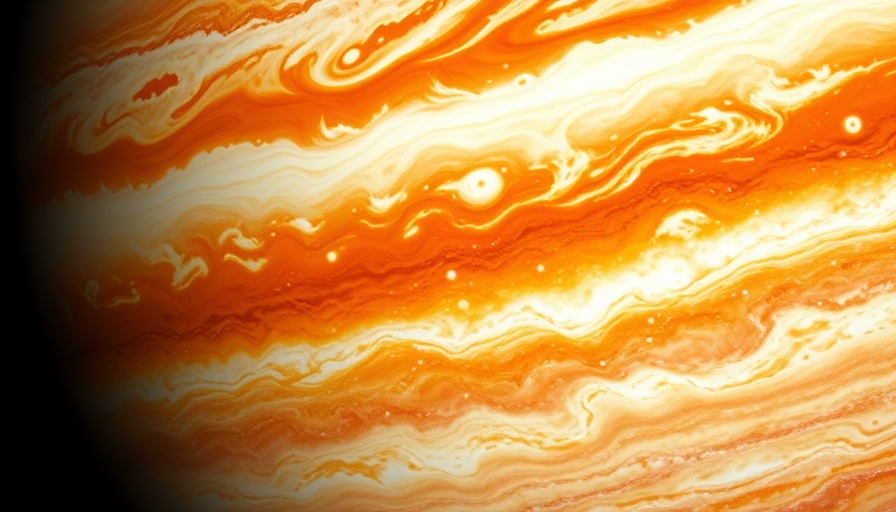
New Discoveries from the Juno Mission
The Juno mission has provided groundbreaking insights about Jupiter and its moon Io. As NASA's spacecraft glides through Jupiter's swirling atmosphere, it continues to unveil the planet's dynamic weather systems and the volcanic activity on Io. This recent flyby, the 69th, has thrown light on the extreme nature of these celestial bodies. From gigantic cyclones to intense volcanic eruptions, the data gathered allows scientists to study the unique characteristics of both Jupiter and its moon.
Understanding Jupiter's Extreme Weather Systems
According to Scott Bolton, principal investigator of Juno, Jupiter hosts polar cyclones that dwarf even the continent of Australia. These cyclones are coupled with fierce jet streams, which bolster the planet’s dynamic environment. The latest findings also offer a clearer view into the behavior of these jet streams, which encircle the northern pole of the gas giant. By piecing together data from various instruments aboard Juno, researchers hope to construct a more complete picture of Jupiter's weather patterns, which continue to astonish scientists.
A Deep Dive into Io's Volcanic Activity
Io, known as the most volcanically active body in our solar system, reveals a captivating landscape shaped by ongoing volcanic processes. The Juno mission has succeeded in providing the first detailed subsurface temperature profiles for Io, indicating that not all of its magma has cooled. Data from the microwave radiometer (MWR) combined with the Jovian Infrared Auroral Mapper (JIRAM) has revealed elevated temperatures beneath its surface, suggesting active geological processes at play. This discovery reaffirms the moon's reputation for being a hotbed of geological activity.
Implications for Future Research
The Juno mission not only enhances our understanding of Jupiter and Io but also opens avenues for future exploration of gas giants and their moons. The data collected could be used to formulate new models in planetary science, especially regarding the interactions of atmospheres, magnetic fields, and surface activities. As scientists decode the mysteries surrounding these celestial bodies, they also gather important insights that could inform our understanding of similar systems across the universe.
Engaging with the Future of Space Exploration
The discoveries made by the Juno mission underline the importance of continued investment in space exploration. Insights gained from these missions have vast implications, not only for understanding our solar system but also in potential future human exploration and habitation of other planets. With every new piece of data, humanity edges closer to answering pivotal questions about our existence and the nature of life beyond Earth.
 Add Row
Add Row  Add
Add 




Write A Comment